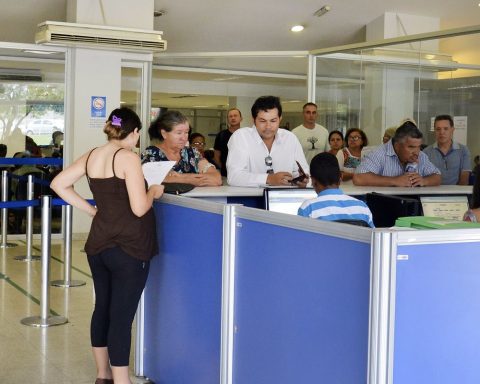The physicists employed at this complex in Geneva work with giant particle accelerators looking for ways to improve the reach of oncological radiotherapy and reach difficult-to-target tumors that end up being lethal.
In a CERN laboratory called CLEAR, its coordinator Roberto Corsini waits next to a linear particle accelerator, which consists of a 40-meter metal rod wrapped in aluminum foil at one end, and a huge array of colorful and measuring instruments. wires in the other.
The research he leads aims to create very high-energy electron beams — the negatively charged particles in the nucleus of an atom — that could help fight cancer cells more effectively.
What they are looking for is a “technology to accelerate electrons to the energies needed to treat deep tumors, which is more than 100 million electron volts” (MeV), Corsini explained.
The idea is to use these very high energy electrons (VHEE) in combination with a promising new treatment method called FLASH.
– Reduce “collateral damage” –
The method consists of administering the radiation dose in a few hundred milliseconds, instead of minutes as is currently done.
It has the same destructive effect on the tumor, but has been shown to cause much less damage to surrounding healthy tissue.
With traditional radiation therapy, “you do cause some collateral damage,” said Benjamin Fisch, a head of CERN’s knowledge transfer group, which is in charge of supporting the possible use of laboratory technologies in different fields.
The effect of the brief but intense FLASH treatment is “to reduce toxicity to healthy tissue while still adequately targeting cancer cells,” he told reporters.
FLASH treatment was first used in patients in 2018, building on currently available medical linear accelerators called linacs, which provide low-energy electron beams of around 6-10 MeV.
However, with such low energy, the beams cannot penetrate deeply, so the treatment has so far only been used on superficial tumors, such as skin cancer.
But scientists at CERN are currently collaborating with Lausanne University Hospital to build a machine that can accelerate electrons to 100 to 200 MeV, making it possible to use FLASH treatment for much harder-to-reach tumors.
– “Inflection point” –
Deep cancerous tumors that cannot be removed with traditional surgery, chemotherapy, or radiation therapy are now often considered a death sentence.
The objective of these advances are cancers “that we do not currently cure,” Jean Bourhis, head of the radiology department at the Lausanne University Hospital, told AFP.
“It could be a turning point for these cancers in particular, which can account for a third of cases [totales] cancer,” he adds.
There is hope that FLASH therapy will reach tumors located in the brain or near other vital organs.
One of the challenges is getting the powerful accelerator compact enough to fit in a hospital.
At CERN, there is a large corridor prepared to house the CLEAR accelerator, which needs 20 meters to push the electrons up to the required energy level, and another 20 meters to condition, measure and deliver the electron beam.
According to Corsini, the coordinator of CLEAR, the European laboratory has the knowledge to “accelerate [partículas] in a much more compact space.
The prototype that is being designed with the University is a 10 meter long machine. This “compact” solution, Corsini said, “reduces cost, power consumption and variability, and can be easily placed in a hospital without having to build an entire building.”
“If all goes well,” construction of the model will begin in February and clinical trials with patients could begin in 2025, said Bourhis, from the University Hospital’s radiology department.


















